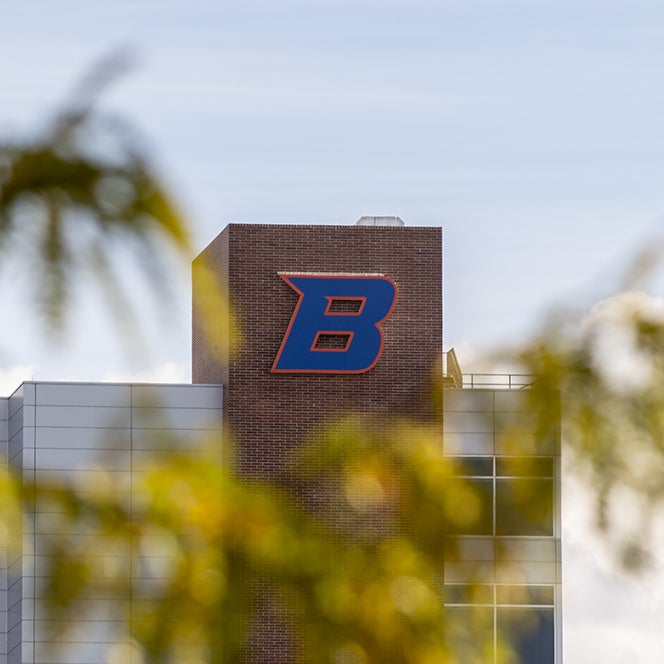
Event Navigation


Thesis Information
Title: The Dawn Of Advanced Collaborative Practices: Charting Transdisciplinary Synergies Through Thematic And Social Network Analysis Within Boise State’s Grand Challenges Initiative
Program: Master of Arts in Anthropology
Advisor: Dr. John Ziker, Anthropology
Committee Members: Dr. Vicken Hillis, College of Innovation and Design and Dr. Stephen Crowley, Philosophy
Abstract
Social networks structure the flow of information and relationships within and across various social groups at various scales. Within higher education faculty, social networks have been found to influence the adoption of evidence-based instructional practices and interdisciplinary research performance. This study examines social networks in research collaboration at the university to understand how structured support initiatives affect interdisciplinary collaboration and collaborative practices among faculty. Purpose: The study has three aims: 1) to characterize existing collaborative research practices under the university systems and policies in effect at the start of my project in a sample of faculty researchers; 2) to gain a better understanding of the historical network structure of research using collaborative grant proposal data; and 3) to understand the network characteristics of recently-established, thematically-focused research teams that the university-sponsored to address “Grand Challenges” — wicked problems as they manifest regionally in Idaho. The thesis, thus, provides two types of baselines for assessing future social networks of research collaboration and collaborative practices: the overall collaborative grant proposal network and the influence of small research team networks. Hypothesis: Diverse social networks lead to more innovative thinking, greater productivity, and the overall value of research. Networks that exhibit parochialism and inequality are less innovative and productive and tend to benefit those already successful. Brokers can work for the benefit of themselves and like individuals or bring along those less involved in the network. Methods: I conducted semi-structured interviews of n = 5 faculty at Boise State on research collaboration. Social network analysis methods were utilized to analyze a complete network of collaborative grant proposals at Boise State from 2016 to 2020, including whole network statistics and predictive modeling using exponential-random graph methods (ERGM) to assess predictors of tie formation. A survey of Grand Challenges research team members was implemented to map networks and understand the composition diversity of these teams. Statistical Analysis: ERGM results of the grant proposal network indicate the two strongest predictors of tie formation are geometrically weighted predictors of degree — the number of each faculty member’s connections in the network — and geometrically weighted edgewise-shared partners — the propensity of friends of friends to develop a connection (triadic closure). These two predictors are confounded: GWD indicates the dispersion of edges (collaborative proposal partnerships), while GWESP indicates the prevalence of triangles, thus the concentration of edges. Additional predictors in the collaborative grant proposal network include two types of homophily — the tendency to make connections among like individuals. The ERGM also considered the total volume of edges in each college. Results: Thematic analysis of interviews reveals a complex interplay between academic culture, institutional structures, and interpersonal dynamics shaping collaboration. Analysis of the collaborative grant proposal network shows overall growth of the network from 2016 to 2019 then a significant reduction in the size of the network with an increase in connectedness in 2020, ostensibly due to the COVID pandemic. Individuals with high betweenness centrality (brokers) become increasingly rare in 2020. There is a notable degree of inequality in the grant network, with the majority of faculty having small numbers of connections and a small number of faculty involved having higher numbers of connections. The development of grand challenges research team networks demonstrates a fair degree of diversity in team membership regarding rank, previous scientific productivity, and mentor-mentee relationships. Discussion: Like many social networks, the collaborative grant proposal network at Boise State demonstrates a moderate level of inequality and star-like structures in the network alongside a large number of individuals with smaller numbers of connections. The network reflects the varying academic culture across colleges and departments and other constraints on research collaboration. The development of grand challenges research teams aims to span the historical inequalities to innovate solutions to wicked problems. The baseline data indicate that these teams are composed of relatively diverse networks and are positioned to be productive factors in research growth at the university.

